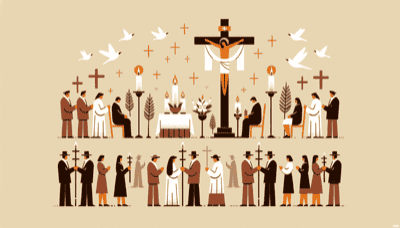We're here to help you keep count of the days to or since a date. Just click the button below and enter your chosen date to get started. Also choose the suggested days or search for a special day above #countingthedays

Good Friday (Viernes Santo in Spanish) is an important religious holiday in Nicaragua, marking the crucifixion of Jesus Christ and his death at Calvary. It is a day of profound religious significance for the predominantly Catholic population.
Good Friday is part of Holy Week (Semana Santa), which commemorates the final week of Jesus's life. The day's observance has deep historical roots, with traditions passed down through generations since Spanish colonization, which brought Christianity to the region.
On Good Friday, Nicaraguans participate in various religious and cultural activities:
Religious Processions: Solemn processions are central to Good Friday observances. Devotees often carry statues and icons representing scenes from the Passion of Christ through the streets.
Passion Plays: Dramatic reenactments of the Crucifixion, known as Viacrucis or Pasión de Cristo, are performed in many communities. Actors portray biblical characters, vividly bringing the story to life.
Church Services: Special church services are held, including the reading of the Passion narrative from the Gospel and veneration of the cross.
Silence and Reflection: A somber mood prevails; businesses close, and many individuals maintain silence from noon until 3 p.m., traditionally believed to be the hours when Jesus hung on the cross.
Fasting and Abstinence: Some Nicaraguans observe fasting or abstain from meat as a form of penance.
Good Friday is a public holiday in Nicaragua; people often have time off work to engage in religious activities. Many attend church services or join processions through their towns or villages. Families gather together for prayer and reflection, sharing meals that typically exclude red meat.
In some regions, people create elaborate sawdust carpets (alfombras de aserrín) on streets along procession routes, featuring colorful designs with religious imagery. These artworks are momentary as they are destroyed by the passing processions, symbolizing impermanence and humility.
The combination of fervent spirituality and communal participation makes Good Friday a poignant day within Nicaraguan culture, reflecting both individual devotion and collective cultural identity.